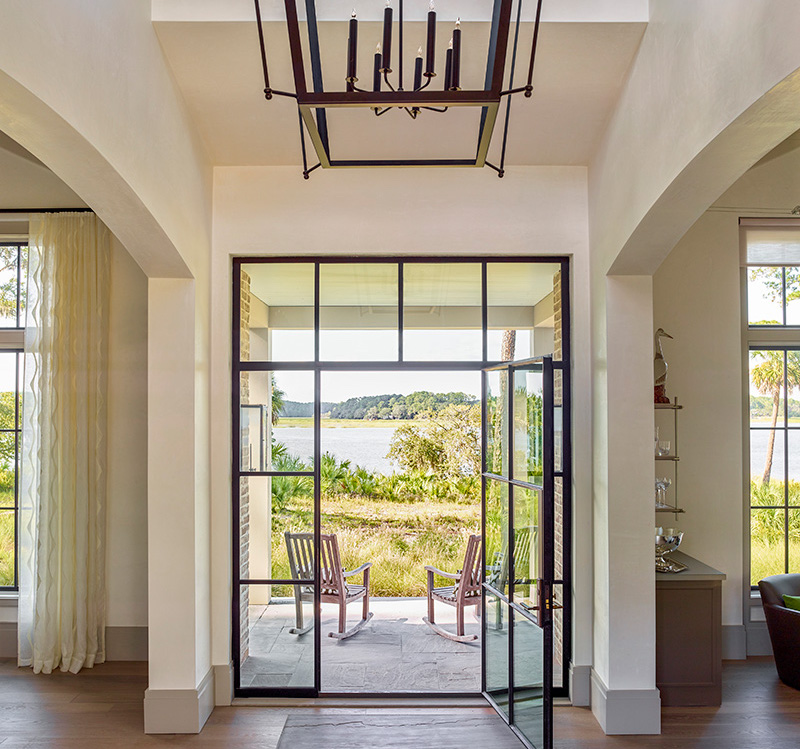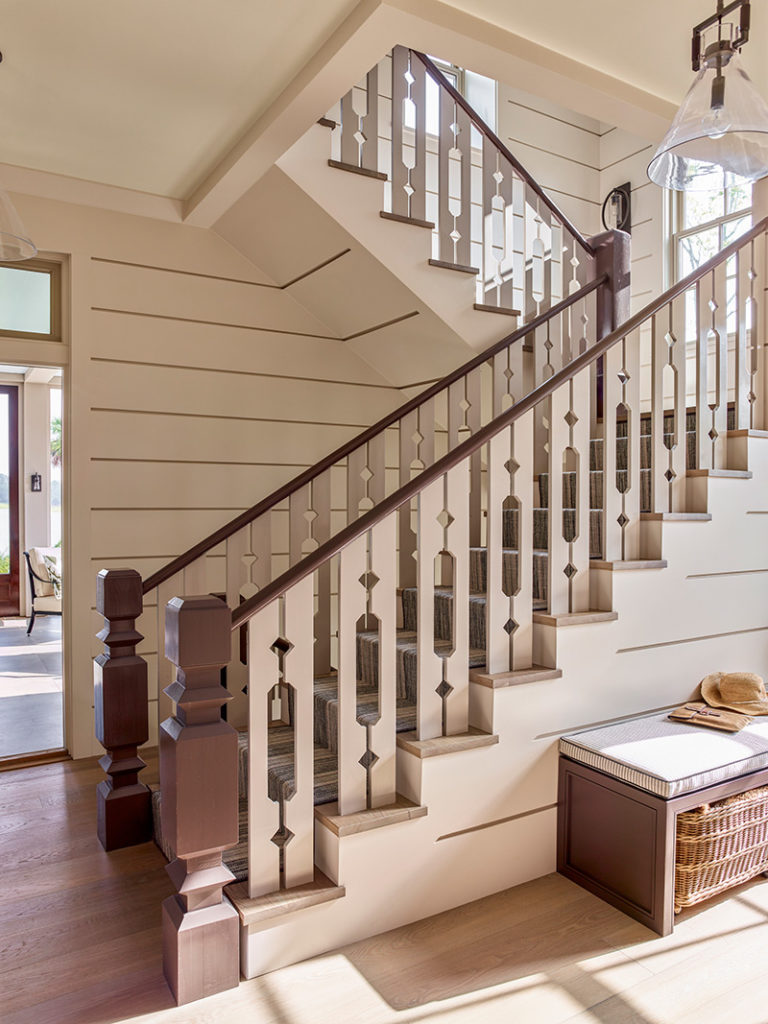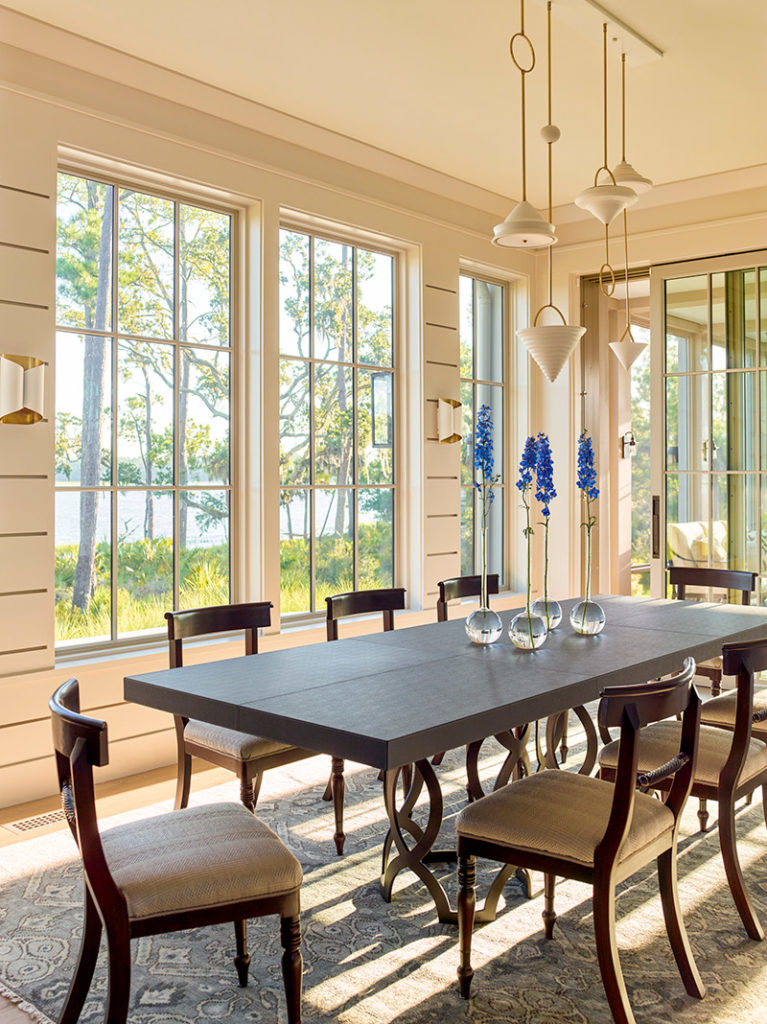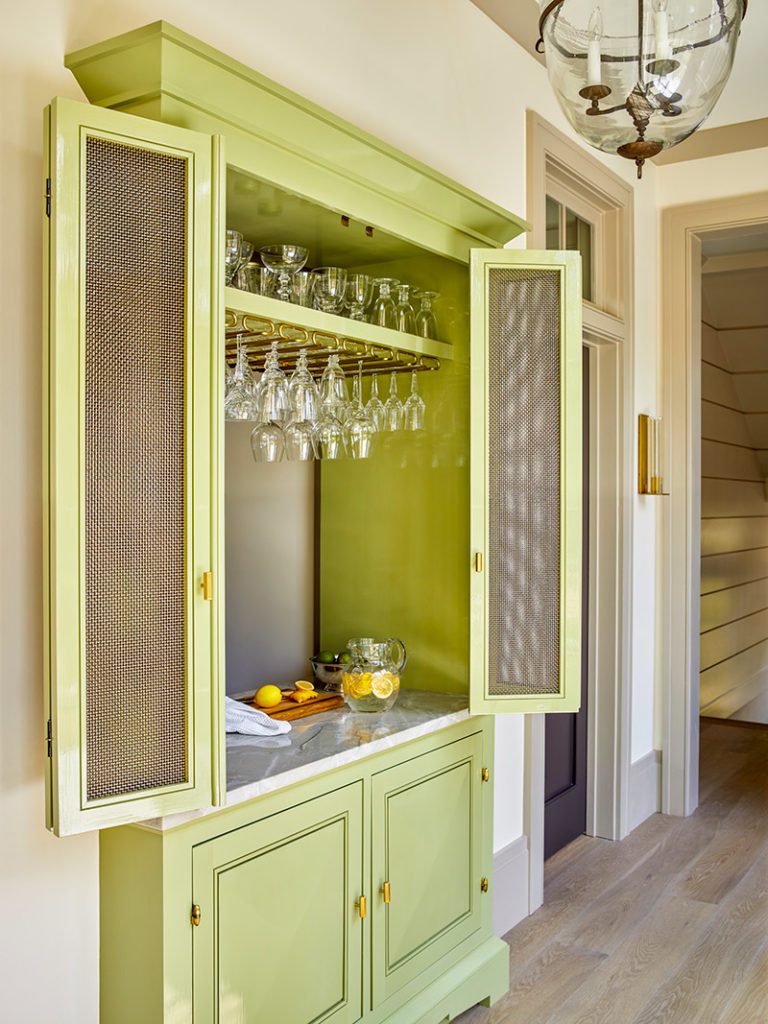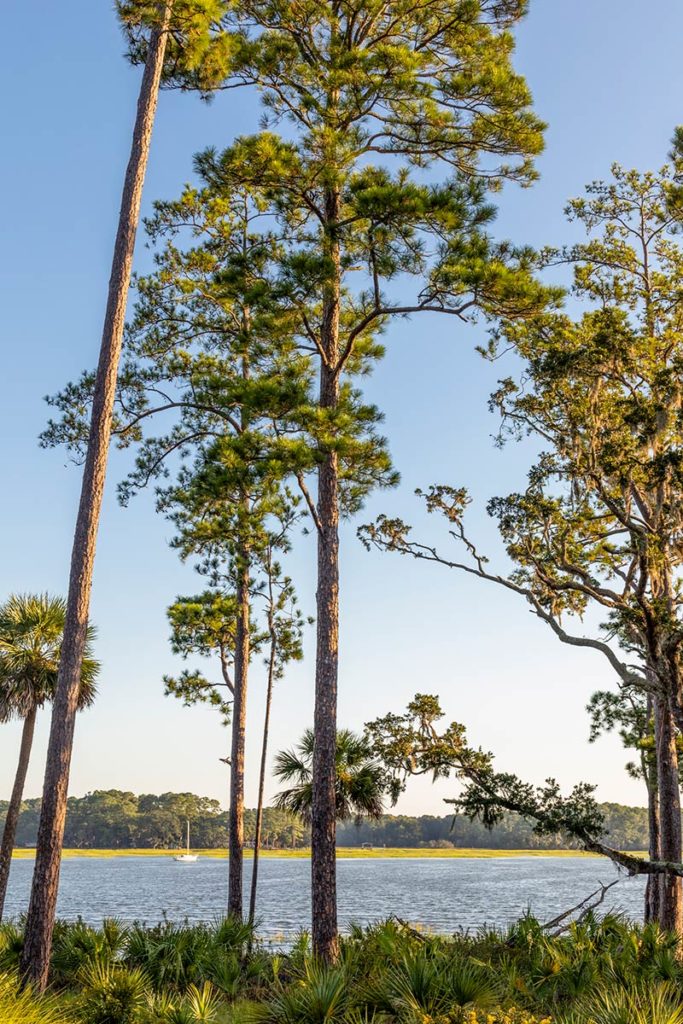By all accounts, it was a memorable night. Kevin Clark, an architect, and his clients, a recently retired couple with busy careers in New York City, were sitting in the bar of the iconic Roosevelt Hotel in Manhattan, over a table of bourbon neat, a photo of a front door the owners had brought, and cocktail napkins marked with house sketches.
That evening, everything the three had been working toward came to fruition: the concept for what would be the couple’s new full-time residence, on a spacious riverfront property in Palmetto Bluff, South Carolina.
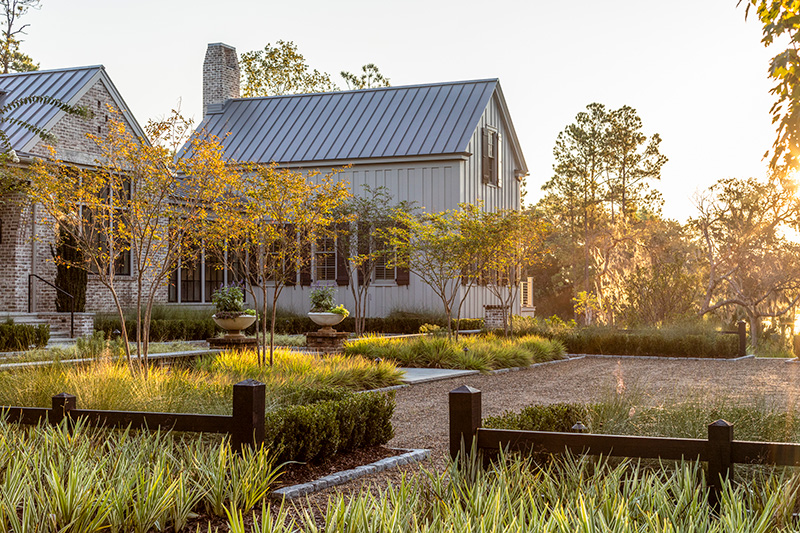

“It was a eureka moment,” says Clark, a senior principal with Historical Concepts in Atlanta. The architectural firm had worked with the family for three years on design iterations, pausing when needed, while the couple clinched their decision to retire full-time to the South Carolina Lowcountry.
The five-and-a-half-acre property, overlooking the May River, is a delight, bounded by tidal flats and marshes, plentiful marine life, swathes of pine trees, and vistas that go forever. They had first spied the property on a sailing trip, when they docked their Hinckley yacht at the Palmetto Bluff marina and toured the area.
As the homeowner says, she and her husband knew they wanted a house that married Lowcountry historical vernacular with a contemporary spirit, “light, bright, and warm.”
Clark and his studio team based their design on four connected pavilions adjoined by five terraces and porches, ideal for privacy or gathering with others. The design also affords superb indoor-outdoor access and connections to nature. With two grown sons, a flexible lifestyle was high on the couple’s list, especially through last year’s quarantine demands.
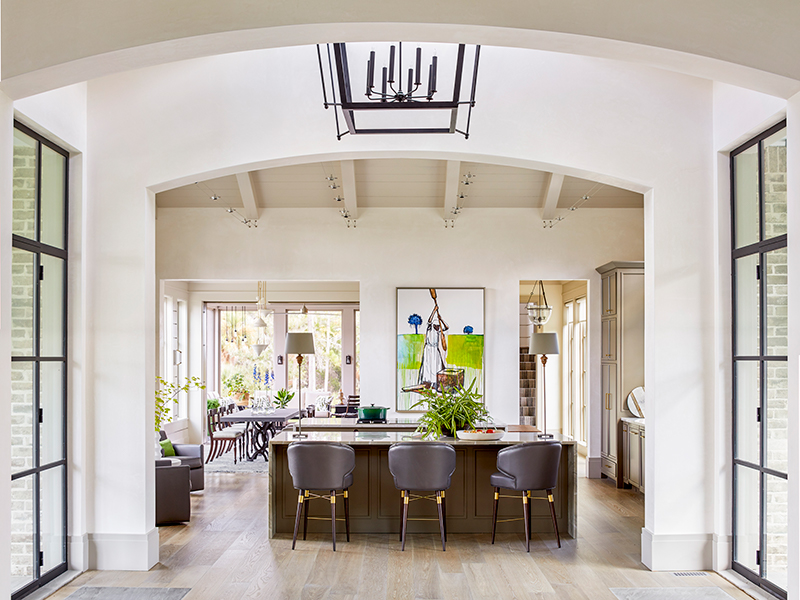

One end of the pavilions holds the master suite. At the other end, beyond the living room, dining room, and kitchen, are two guest suites. Plantings of wild grasses among the outdoor spaces around the house bolster the warm comfort of the parti pris. “The house complements the surroundings, rather than competing with it,” Clark says.
The home seems larger than its modest size, 4,400 square feet. “It could have been twice as big and twice as tall,” Clark says. “It would be easy to overwhelm it. The restraint makes it so expressive and successful. Sometimes grandeur negates the view.”
The home’s pavilion design, recalling the five-bay Lowcountry style, and its sublime positioning on the peninsula-shaped property gently reflect the region in highly expressive style. “The driving principle is the long linear house on the riverfront,” Clark says. “One, to take advantage of the beautiful views. Second, the north-facing site.” Some Lowcountry homes, he explains, would have a big screen porch, but that would have made the house dark. “We wanted to pull everything apart, so you get light almost all times of day in every room.”
The exterior, of board-and-batten and wood-molded brick from the Old Carolina Brick Co. in Salisbury, North Carolina, lends an impression of heft and a generous dollop of texture, color, and depth.
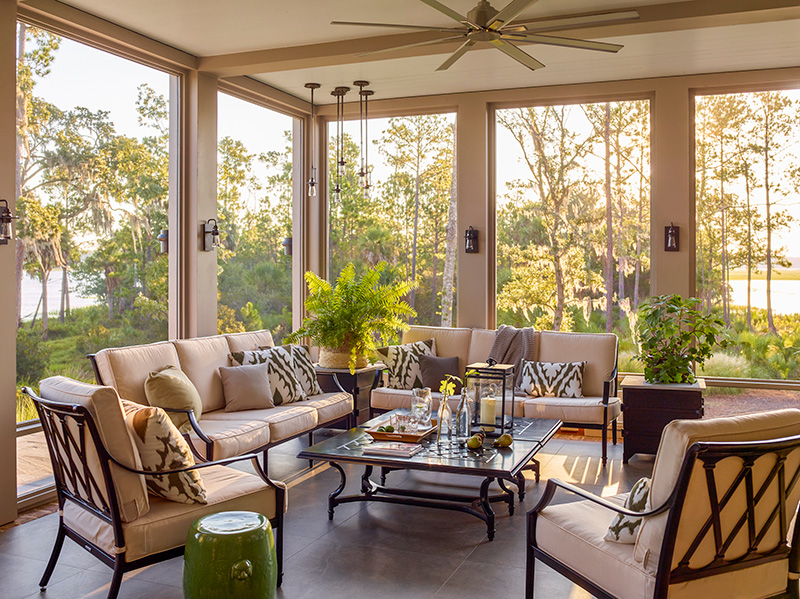

Much of that appealing balance lies in the homeowners’ style and yen for a smaller house, says Andrew Cogar, president of Historical Concepts. “You can have a modest home with a rich expression. In this house, we wanted a great cross-section of the work we’ve been doing— understanding the land, the views, and quality of light—and set it on its ear just a little. For me, this is a direct example of how the firm has grown.”
Havilande Whitcomb, Principal of Havilande Whitcomb Design in Westport, Connecticut, agreed that the interior should be driven by the owners’ art and the sunny rooms. Creamy whites and subtle shades—interjected with occasional bursts of color—open the house to the outdoors and allow architectural details to shine.
“I always develop a point of view at the start of a project,” Whitcomb says. “This was downsizing, with a lot of careful editing and curating, and then some very specific additions.” She helped the couple assess the furnishings from their previous (and larger) home, and distill the pieces they love. Whitcomb added casual furniture with modern lines and contemporary lighting, such as the fixtures in the living room and dining room, handmade by Farrah Sit. Oak floors in taupe, by the North Carolina company Burchette and Burchette, are the perfect complement.
Whitcomb points out the stylized stair rails, newel posts, and balusters on the home’s stairway, with the composition and craftsmanship of sculpture. The stairway anchors the two-story pavilion, with two guest rooms upstairs—both with marsh and river views—and a garage below. The top of the stairs accesses a rooftop deck with beautiful sunset views and occasional nighttime stargazing.
The layout is filled with space-saving, eye-pleasing features. A built-in armoire—appearing very much like a freestanding piece of furniture—serves as a passthrough from the pantry and as storage space, painted a warm spring green.
The project represented “a beautiful harmony” among the primary creators, the homeowner says: architect Clark, designer Whitcomb, Josh Simpson of Simpson Construction in Bluffton, and, of course, herself and her husband. “It was a true partnership.”
The memory of the night at the Roosevelt, when she and her husband sat with Clark, says it all. “It was like magic to me. I looked down at the paper napkin and said, ‘that’s it.’ The land loves this house.”
The Palmetto Bluff home is featured in the new book Visions of Home pubished by Rizzoli.
For more information, visit historicalconcepts.com.


